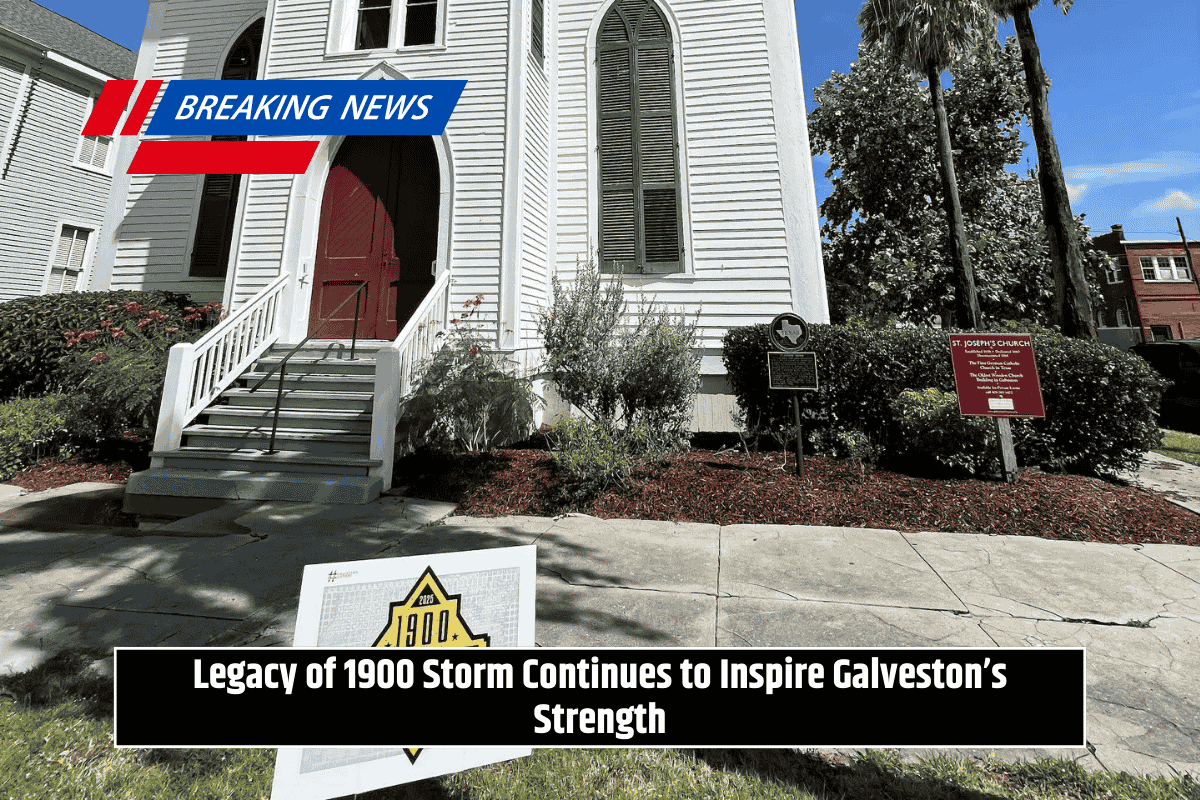GALVESTON, Texas — More than a century after the hurricane that nearly wiped it off the map, Galveston is getting ready to commemorate the 125th anniversary of the 1900 Storm—America’s deadliest natural disaster—with a community-wide tribute to survival, history, and resilience.
On September 8, 1900, a catastrophic hurricane swept through Galveston Island, claiming the lives of an estimated 6,000 to 12,000 people and destroying much of the city’s infrastructure.
But in the aftermath of one of the most devastating events in U.S. history, hundreds of buildings—many still standing today—became symbols of strength and recovery.
Now, the Galveston Historical Foundation (GHF) is spotlighting those historic survivors with a new campaign: yard signs for homes and properties that weathered the 1900 storm.
Storm Survivor Yard Signs: A Tribute in Every Yard
Building on the success of its Storm Survivor plaque program—launched in 2000—GHF is offering pre-order yard signs for $20, inviting homeowners to proudly display their property’s connection to that fateful day. More than 700 properties have been verified as storm survivors, with more added every year.
“These signs are priced to be accessible,” said GHF Chief Creative Officer Will Wright. “It’s a grassroots way to show how proud we are of these homes and the community that’s grown around them.”
How Homes Are Verified as 1900 Storm Survivors
The foundation’s historian, Jami Durham, verifies each property using detailed research methods, including:
Original insurance records
Sanborn fire insurance maps (from 1899 and 1912)
On-site inspections through what she calls a “dashboard survey”
Homes that no longer retain historical elements—such as original siding, windows, or architectural details—or that have been altered with inaccurate additions are typically denied.
“It’s about authenticity,” Durham explained. “If modern materials have erased the historic character of the house, it can’t qualify.”
Stories That Still Resonate
The plaques and new yard signs aren’t just about architecture—they also unlock powerful family stories passed down through generations. Any time the foundation shares storm-related content, Wright said, descendants reach out with memories, letters, and photographs of ancestors who endured the storm.
“People want a place to tell those stories,” Wright said. “The 125th anniversary is a way to honor that memory.”
Events Leading Up to the Anniversary
To commemorate the milestone, GHF is organizing a series of community events, including:
A lunchtime weather lecture by Space City Weather’s Matt Lanza
Guided trolley tours and open house events
A 1900 hurricane trivia night
A block party on Sept. 6 featuring:
Live music
Food vendors
Oral history sessions with descendants
A preview of the new “1900 Storm Experience” exhibit
Why It Matters Today
In 1900, Galveston was a booming immigration port—second only to Ellis Island—and a rising commercial rival to Houston. Known as the “Wall Street of the Southwest,” the city was growing fast. Then, in a matter of hours, it was nearly wiped out.
Yet despite the loss, Galveston rebuilt, fortified its coastline with the famous seawall, and became a beacon of resilience.
“We’re familiar with hurricanes,” Wright said. “We’ve had many since then, but what happened in 1900 shaped the island’s identity. And that story of recovery has been renewed many times over the last 125 years.”
